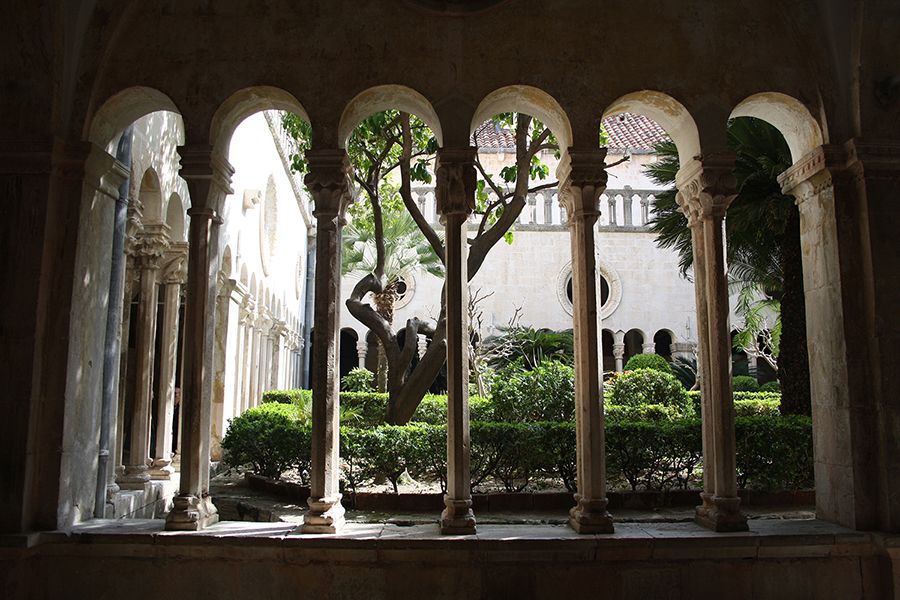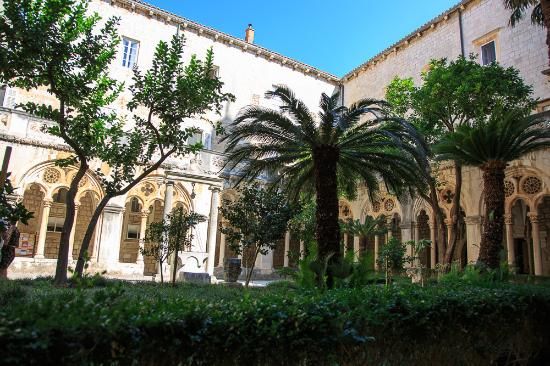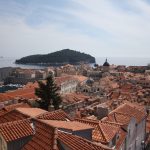The word monastery comes from the Greek word “monasteries” that translates to “to live alone” from the root “monos” meaning alone and the suffix “-terion” that denotes a place for doing something. The word monos emphasizes the roots of the Christianity as a religion when Christian monks lived as hermits, people who live in seclusion from society.
One of the first Christian monasteries was founded in Egypt in the 4th century, while in Western Europe early monasteries were designed according to the plans of a monastery at Monte Cassino in Italy founded by St. Benedict of Nursia.
It is important to say that not all monks lived secluded from society, but instead they went out to reach people and to try to help the poor. It was in the 13th century when the friars were formed. The word friar comes from the French word for brother “frère” and denotes a member of one of the mendicant orders that have adopted a lifestyle of poverty, traveling, and living in urban areas for the purpose of preaching, evangelsaation, and ministry – especially to the poor.
There were four main orders of friars: Augustinians, Franciscans (called grey friars because of their grey costumes), Dominicans or black friars and Carmelites or white friars.
In the Old Town of Dubrovnik one can find some of the most beautiful monasteries in the world still operating today, while numerous monasteries from the time of Dubrovnik Republic completely vanished after the great Earthquake in 1667. or the former monasteries’ sites turned to restaurant, such as the Convent of St. Claire situated behind the Large Onofrio’s fountain.
Friars Minors Franciscan Monastery
The Franciscan Church and Monastery is situated at the very beginning of Stradun, along which the lateral side of the monastery runs. The large complex consisting of a 14th-century cloister, a historic pharmacy and a small museum housing a collection of relics and liturgical objects, and the impressive library built in the 17th century where one can find over 20,000 books. among them 137 incunables (books printed before the year 1501 in Europe).
Before you enter the small square garden with a fountain surrounded by orange and palm trees, don’t forget to stop and admire the pietà over the door, a work by the local masters Petar and Leonard Andrijić from 1498. Each capital over the slim dual columns in the cloister of this late – Romanesque building features different figures: from animal and floral motifs to portraits of human heads.
The pharmacy dates from 1317 and is the third oldest, still functioning pharmacy in the world. The pharmacy was used by the monks as well as by the citizens of Dubrovnik Republic.

Dominican Monastery
Built in transitional Gothic-Renaissance style, this 14th-century monastery houses a rich collection of jewelry, 15th and 16th century paintings by Lovro Dobričević, Nikola Božidarević, Titian, as well as historical artefacts. It’s strategic position near the Dubrovnik harbor is reflected in the understated design of the building that was incorporated into the city walls. An important center of philosophy and theology from its founding in 1390, the monastery complex acquired its final shape in the 15th century when the vestry, the capital hall and the gothic cloister, constructed after the designs of the Florentine architect Maso di Bartolomeo, were added. However, it underwent restoration after the infamous Great Earthquake hit Dubrovnik in 1667. Among the most notable pieces in the single-naved church are the large golden 14th-century Crucifix work by Paolo Veneziano and a 20th-century past painting by the famed Croatian artist Vlaho Bukovac above the side altar.
There is an interesting story about the monastery’s grand stairway and its uneven mortaring of the balustrade’s columns that reveals the hidden agenda behind it. In order to deter men who used to stand next to the staircase while trying to catch a glimpse of women’s ankles, monastery’s monks made this tricky modification in this important and largest gothic buildings on the eastern Adriatic coast.










